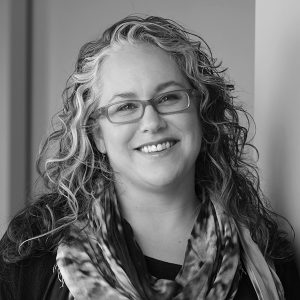
Reimagining Creative Leadership
When the world went virtual in March 2020, design and innovation teams moved into new tools and remote working, initiating a profound shift in what it means to be part of a creative organization. This change is still being felt today, and raises the question: what does the future of creative leadership look like?
We gathered a group of experts in business, design, HR and talent acquisition to debate the ways that this shift has emerged, and to explore new strategies leaders can use to move forward. Now we’re revisiting this rich debate for reminders on how creative teams can evolve and enjoy human-centric collaborations today, tomorrow and beyond.
Watch the panel below and read on for our top takeaways.

 Play video
Play videoThe creative leadership of the future is:
Authentic: Leadership has many facets. Leaders must ensure their teams have the necessary resources, as well as confidence in themselves and what they’re doing. A key way to achieve both aspects is to maintain open communication. People want to connect: authentic bonds between leaders and teams results in increased trust, better working environments and stronger output.
Purpose-led: Jenna Freed, from ACRES Capital, said that employees are increasingly seeking bigger purpose in their roles. Freed explained: “Within our organization, we are focusing on helping [employees] see themselves as part of something larger.” She added, “We are constantly challenging our leaders to be part of this as well.”
Communicative: “High-performing, creative teams need autonomy,” noted People on Point’s Erika Duncan. “They also need to be ‘fed’ individually and as a team. A regular cadence of communication in person and virtually, as well as opportunities to physically connect one-on-one or in a group, is essential.” Duncan continued, “We all know–people don’t leave people. They leave jobs.”
Rather than demand your place in the business, command your place within it. Go out and show your team what you can do, proactively demonstrating your skillset to your team and encouraging them to do the same.
Getting to grips with collaborative tools is essential, especially for the success of hybrid and remote teams. Ensure your foundational tools and systems enable good flow and communication within the team—then periodically take the time to check in, reflect and troubleshoot.
Be intentional and set rituals that reinforce the behavior you want from your team. Encourage your team members across levels to respect the org’s values. A “lead by example” approach is crucial for success.
Open the conversation between your team and HR. By bringing HR into the picture, when it comes to hiring prospective talent, HR will have an in-depth knowledge of workflow and needs. If you’re hearing feedback such as, “Our design team loves HR!” you’re doing something right.
Getting to grips with the business as a whole will help put your work in context, and better enable you to bring new ideas to the table. Be intentional and set an example for how you want your team to show up in your organization.
Hosting the panel was an inspiring experience. All six incredible leaders focused on different variations of the same goal: ensuring that their teams felt inspired to do their best creative work for themselves, their organizations and their clients. That core will drive the future of creative leadership wherever it may lead.
To learn more about how frog can help you lead your team towards doing its best work, reach out to us.
This article was written with input, suggestions and strategies from our panelists:
Aric Cheston—Vice President, User Experience, PowerSchool
Mariela Sotomayor—Sr. Director of Design, Loadsmart
Cory McCruden—Managing Director, Technology, Banking, Wealth & Asset Management, EY
Jenna Freed—Chief Human Resource Officer, People & Infrastructure, ACRES Capital
Erika Duncan—Co-Founder and Human Capital Advisor, People on Point
Liz Kiehner— Chief Growth OfficerChief Growth Officer, Nortal

Turi McKinley focuses on developing frog’s design research, participatory design and creative collaboration skills. She partners closely with companies seeking to develop new skillsets and capabilities for user-centered design and innovation.
We respect your privacy
We use Cookies to improve your experience on our website. They help us to improve site performance, present you relevant advertising and enable you to share content in social media. You may accept all Cookies, or choose to manage them individually. You can change your settings at any time by clicking Cookie Settings available in the footer of every page. For more information related to the Cookies, please visit our Cookie Policy.


